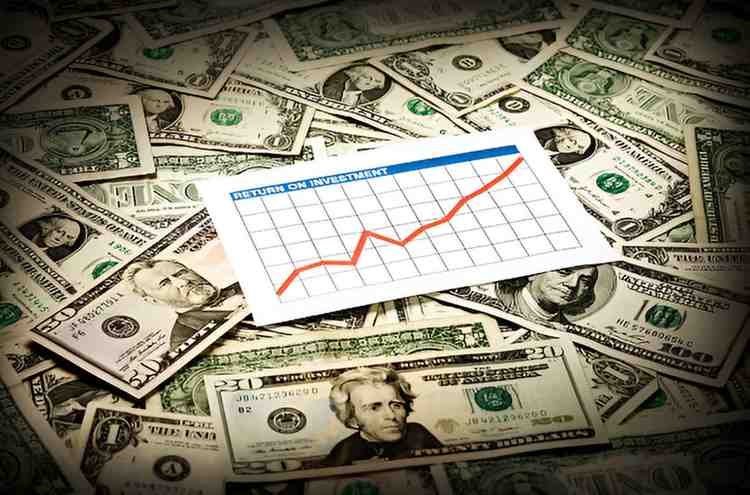As a finance expert, I often analyze mutual funds to determine their performance. American Funds, managed by Capital Group, stands out as a long-term player in the investment space. In this article, I break down the rate of return for American Funds mutual funds, covering historical performance, key metrics, comparisons, and factors influencing returns.
Table of Contents
Understanding Rate of Return
The rate of return (RoR) measures the gain or loss on an investment over a specified period. For mutual funds, it includes capital gains, dividends, and interest, expressed as a percentage of the initial investment.
The formula for annualized RoR is:
RoR = \left( \frac{Ending\ Value - Beginning\ Value + Dividends}{Beginning\ Value} \right) \times 100For example, if you invest $10,000 in an American Funds mutual fund and it grows to $12,000 over five years with $500 in dividends, the RoR is:
RoR = \left( \frac{12000 - 10000 + 500}{10000} \right) \times 100 = 25\%Compounded Annual Growth Rate (CAGR)
Since mutual funds compound returns, CAGR provides a smoother annualized return:
CAGR = \left( \frac{Ending\ Value}{Beginning\ Value} \right)^{\frac{1}{n}} - 1Where n is the number of years.
Historical Performance of American Funds
American Funds has several well-performing funds. Below is a comparison of some popular funds and their 10-year annualized returns (as of 2023):
| Fund Name | 10-Year CAGR | Expense Ratio |
|---|---|---|
| Growth Fund of America | 12.3% | 0.62% |
| Investment Co. of America | 10.8% | 0.59% |
| EuroPacific Growth Fund | 8.5% | 0.81% |
| Washington Mutual Fund | 9.7% | 0.57% |
Source: Morningstar (2023)
Key Observations:
- Growth Fund of America has outperformed with a 12.3% CAGR, likely due to its tech-heavy holdings.
- EuroPacific Growth Fund has lower returns, reflecting international market risks.
- Expense ratios are reasonable, averaging 0.6%, which helps net returns.
Factors Influencing Returns
1. Asset Allocation
American Funds use active management, meaning fund managers adjust holdings based on market conditions. For example:
- Equity-heavy funds (like Growth Fund of America) perform well in bull markets.
- Balanced funds (like American Balanced Fund) provide stability but lower returns.
2. Expense Ratios and Fees
Lower fees mean higher net returns. A 1% fee difference over 30 years can reduce final returns by ~25% due to compounding.
3. Market Conditions
- 2008 Financial Crisis: Many funds dropped 30-40% but recovered by 2012.
- 2020 COVID Crash: Funds dipped but rebounded quickly due to Fed stimulus.
4. Dividend Reinvestment
American Funds often distribute dividends, which, when reinvested, boost total returns.
Comparing American Funds to Index Funds
Index funds (like Vanguard S&P 500) have gained popularity due to lower fees. Let’s compare:
| Metric | American Funds (Growth Fund) | Vanguard 500 Index |
|---|---|---|
| 10-Year CAGR | 12.3% | 12.1% |
| Expense Ratio | 0.62% | 0.04% |
| Active Management | Yes | No (Passive) |
Takeaway: American Funds slightly outperformed the S&P 500 but with higher fees. Investors must decide if active management justifies the cost.
Calculating Expected Future Returns
Using historical averages, we can project future returns. If a fund has a 10% CAGR, an initial $50,000 investment grows as follows:
Future\ Value = 50000 \times (1 + 0.10)^n| Years | Future Value |
|---|---|
| 10 | $129,687 |
| 20 | $336,375 |
| 30 | $872,470 |
This shows the power of compounding.
Risks and Limitations
1. Past Performance ≠ Future Results
Just because a fund returned 12% in the past decade doesn’t guarantee similar future returns.
2. Tax Efficiency
American Funds are not always tax-efficient due to frequent trading. Investors in high tax brackets may prefer ETFs.
3. Market Volatility
During downturns, even strong funds suffer. Diversification helps mitigate this.
Final Thoughts
American Funds offer solid long-term returns, but investors must weigh fees, risk tolerance, and investment goals. While some funds outperform indices, others lag. I recommend a balanced approach, mixing low-cost index funds with select American Funds for diversification.





